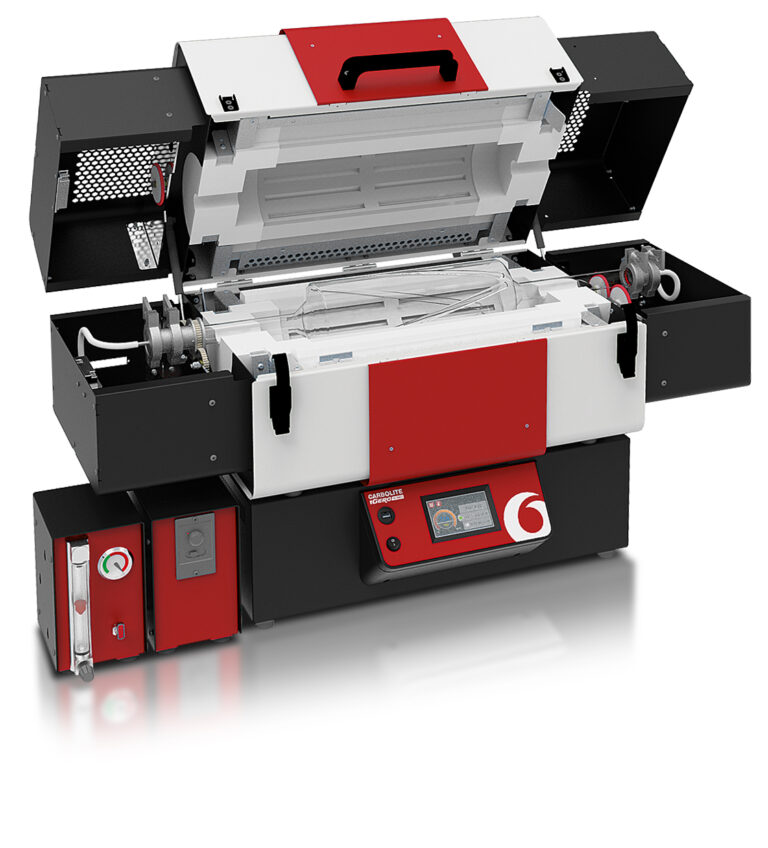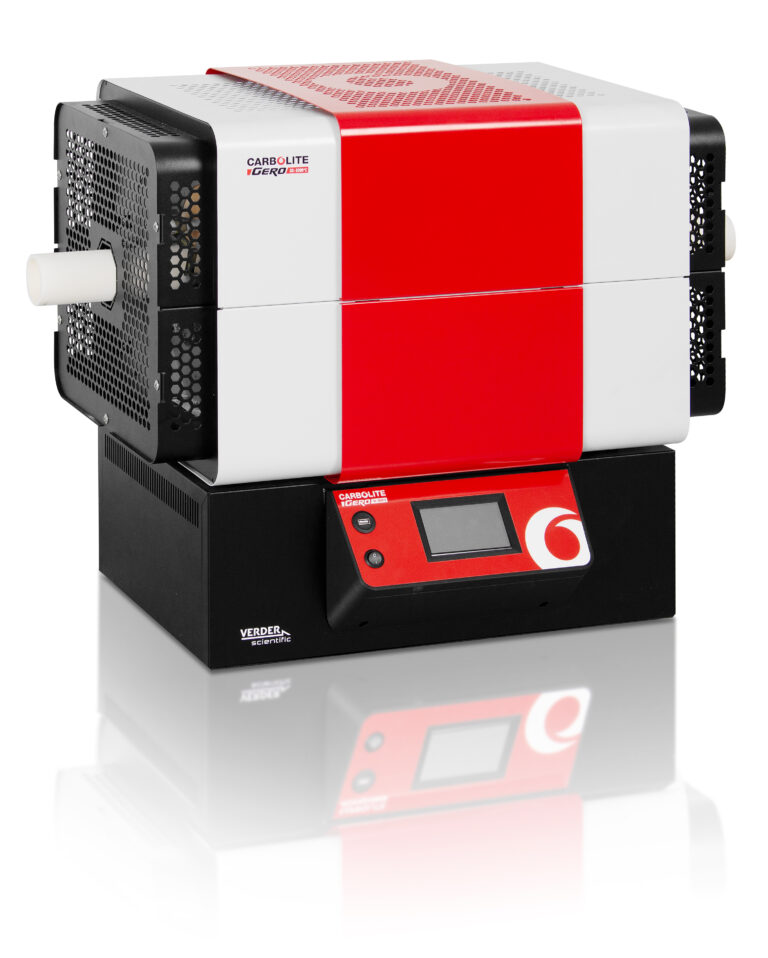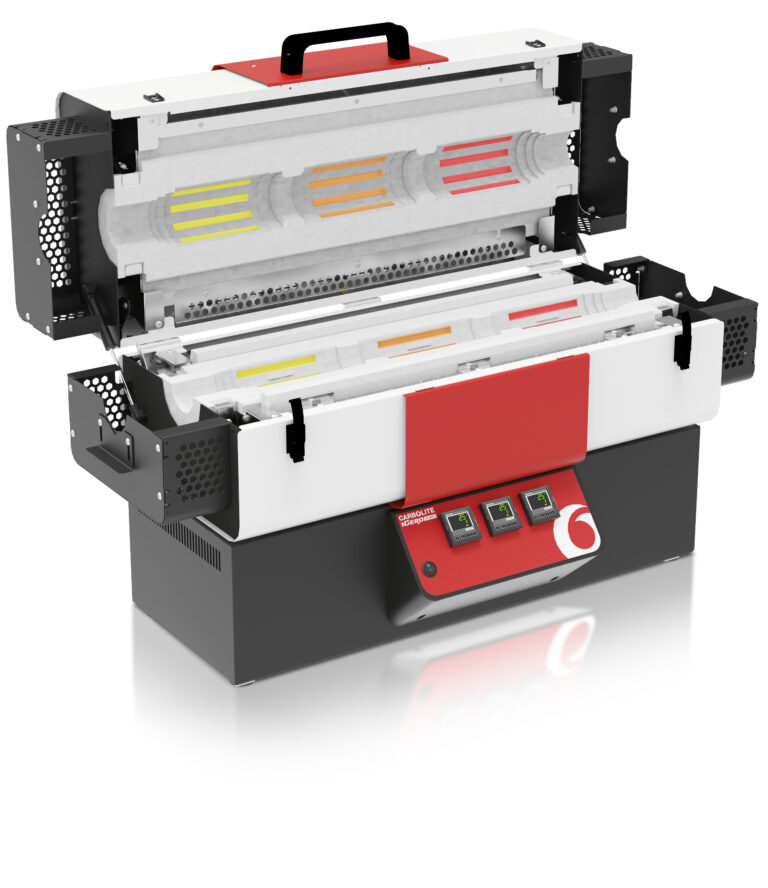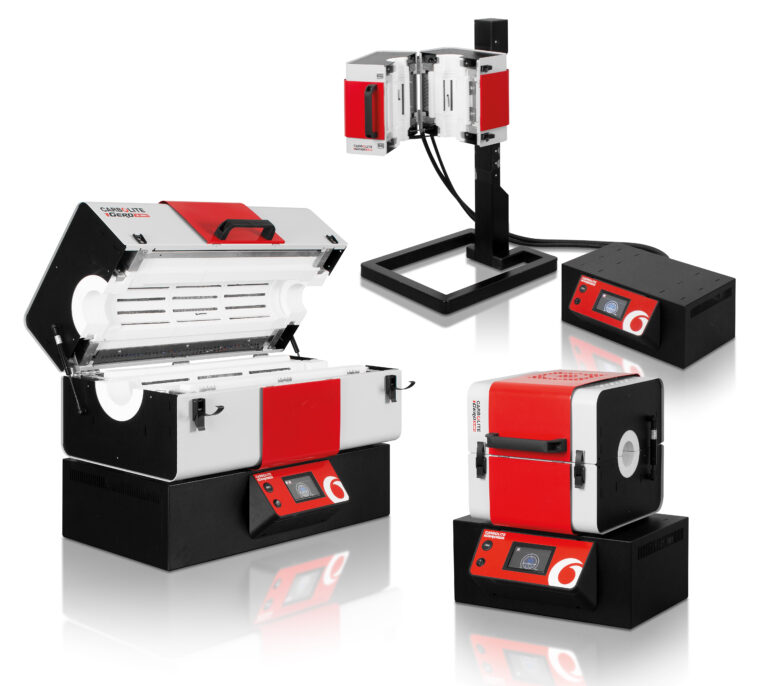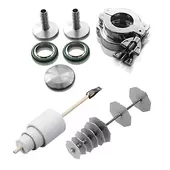MORE THAN 80 YEARS OF HEATING ENGINEERING
Tube Furnaces
Carbolite Gero tube furnaces provide excellent temperature uniformity and are ideal for heating small samples.
Each tube furnace can be modified to meet your exact needs. When specified at the order stage, tube furnaces can be upgraded to include sophisticated digital controllers, programmers, and loggers. Over-temperature protection and additional safety features, such as insulation plugs and radiation shields, are also available.
Some Carbolite Gero tube furnaces are designed with an integral work tube, while others require a separate work tube. This is a highly flexible arrangement; work tubes are available in different diameters and materials (quartz, ceramic or metal). When a work tube of an adequate length is used, a standard tube furnace can easily be upgraded with a controlled atmosphere or a vacuum.
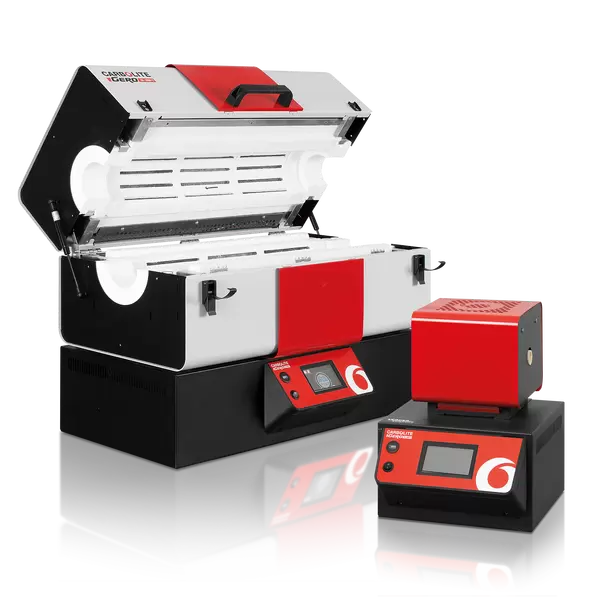
TUBE FURNACE DETAILS
Typical applications of tube furnaces include the purification, coating, drying, hardening or ageing of samples. A tube furnace can also be used for annealing, brazing, calcination, degassing, sintering, soldering, sublimation, synthesis, and tempering. In a laboratory, a tube furnace could be used for thermocouple calibration, in the testing of fuel cells, or catalyst research.
The intended use of your tube furnace will govern which furnace is most suitable for you. Our tube furnace selection ranges from simple and economical options, such as the wire wound single zone tube furnace, to more advanced systems, such as the AZ tube furnace, which has eight independently controllable heating zones. The controllable heating zones of the AZ tube furnace allow a temperature gradient to be set for applications such as chemical vapour deposition.
Tube Furnaces - FAQ
WHAT IS A LABORATORY TUBE FURNACE?
A laboratory tube furnace is a heating device that meets precise temperature control and uniformity requirements. Tube furnaces are designed to contain a work tube or vessel into which samples can be placed and then heated. The heating elements are positioned around the work tube to optimise temperature distribution. It is a standard piece of equipment in many labs, used for various applications such as heat treatment of materials or crystal growth.
WHAT IS THE MAIN BENEFIT OF A TUBE FURNACE INSTEAD OF A CHAMBER FURNACE?
One benefit of using a tube furnace rather than a chamber furnace is that they are better suited to processing smaller samples due to their smaller volume capacity and fast heat-up rates. Sealed work tubes both protect the furnace construction from contaminants and make it easier to maintain a modified atmosphere around the samples
WHICH TYPES OF TUBE FURNACE EXIST?
There are many types of tube furnaces, available in a range of configurations. These include split, non-split, gradient, rotary, and oscillating. Split and non-split tube furnaces can be positioned so that the work tube is in a vertical or horizontal orientation.
WHAT IS THE UNIFORM LENGTH IN A TUBE FURNACE?
The uniform length refers to the area within the tube furnace where the temperature is most consistent. It is possible to increase the uniform length within a tube furnace by fitting insulation plugs and increasing the number of heated zones. A typical temperature uniformity tolerance is ±5°C and will be quoted over a specified work tube length.
Innovations
Our Latest Innovations
At Opti-Tech, we live on the leading edge. Find out what’s new around here, from
the latest solutions to the newest technologies.

